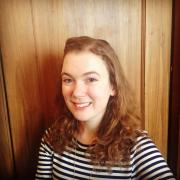When people find out that I write about environmental health, they immediately have questions: What kind of baby bottles are the safest? Is it true what my friend told me about chemicals in sunscreen? And, how can I possibly afford to replace everything in my house with organic and non-toxic items?
I think about that last question a lot. I grew up, like a lot of kids, in a situation where throwing away canned foods or going totally organic was a fantasy on par with tooth collecting fairies and jolly white-bearded men lugging sacks full of gifts. My mom would have been heartbroken if someone had told her to ransack our cupboards, then replace all of our furniture and cosmetics, or her children's health would be at risk. Throwing everything away and starting from scratch just wasn't possible for us, and it's not possible for most families.
Luckily, there are a lot of easy and affordable (even free!) changes we can all make to protect our families from toxic chemicals. This week, we're putting the eco in economical with our top five thrifty, non-toxic tips:
Lose the shoes: Lower your toxic chemical exposures by leaving your shoes at the door. Lead-contaminated soil from the outside creates the majority of lead dust inside our homes. Leaving your shoes at the door can cut your lead dust levels by 60 percent, and also reduce your exposure to pesticides, dust mites, and more.
Try to DIY: Replace a few of your cosmetics and cleaning supplies with cheap and easy DIY alternatives. Campaign for Safe Cosmetics has a great assortment of DIY recipes for everything from herbal acne treatments to chocolate bubble bath. Women's Voices for the Earth will help you makeover your cleaning supplies with a range of DIY cleaners and scrubs. Don’t feel pressured to change everything all at once! Try a new recipe and make reasonable changes that work for your budget. These projects can also double as a fun activity to do with the kids, a party theme, or a homemade gift for friends.
Be smart about plastic: Avoid microwaving food in plastic containers. When you’re heating up frozen meals, scoop the food into a microwave safe container instead of heating it in the plastic container. Not all plastics are created equal, which is why plastic containers have a number on the bottom. If you’re purchasing plastic containers, or foods stored in plastic, use this rhyme from Slow Death by Rubber Duck by Rick Smith and Bruce Lourie, to make sure you’re making the safest choices: Four, five, one and two, all the rest are bad for you.
Say no to receipts: Sometimes, you need a receipt. Maybe it’s a big ticket item, maybe you’re on a strict budget: You know when a receipt is necessary. But when you can avoid receipts, you should. Most receipts are coated in a powder that contains BPA, which you can absorb through your hands. Avoid receipts when possible, wash your hands frequently, and don’t commit the all too easy toxic faux pas of letting receipts build up in your wallet or at the bottom of your purse.
Cleaner air: We spend most of our time indoors, which is why cleaning up your indoor air quality is one of the most important things you can do to avoid toxic chemicals. Luckily, the best way to clean up your indoor air is also easy and free: Open a window for five minutes every day. This simple action significantly lowers levels of indoor air pollutants. Try to do this daily, and not just at home: If you can, open a window at work for a few minutes too.



The views and opinions expressed in this post are those of the author(s) and do not necessarily reflect those of MomsRising.org.
MomsRising.org strongly encourages our readers to post comments in response to blog posts. We value diversity of opinions and perspectives. Our goals for this space are to be educational, thought-provoking, and respectful. So we actively moderate comments and we reserve the right to edit or remove comments that undermine these goals. Thanks!